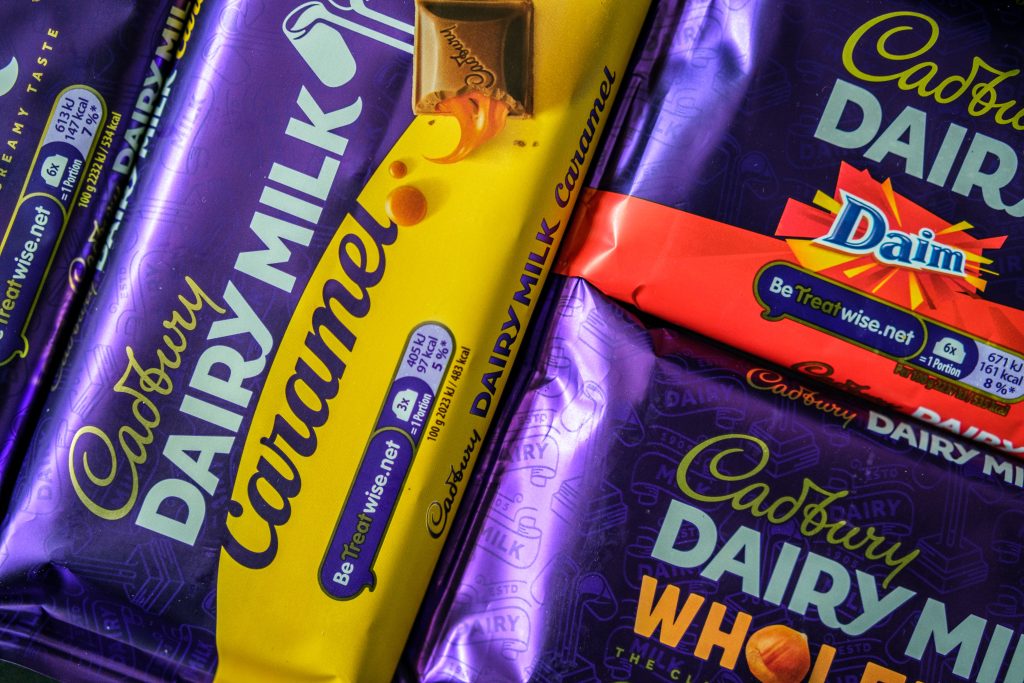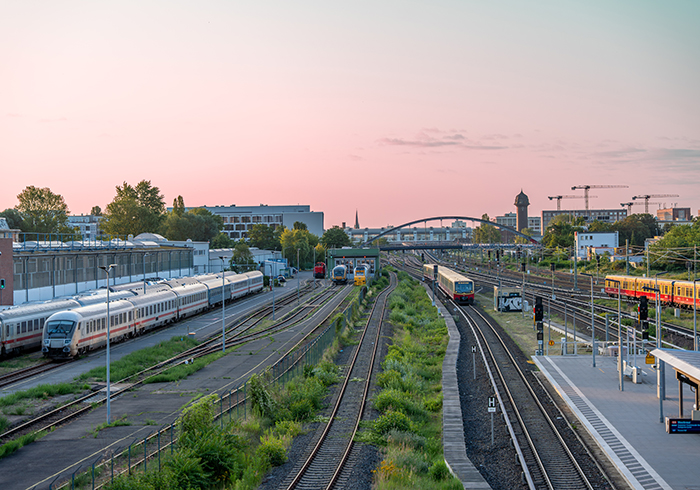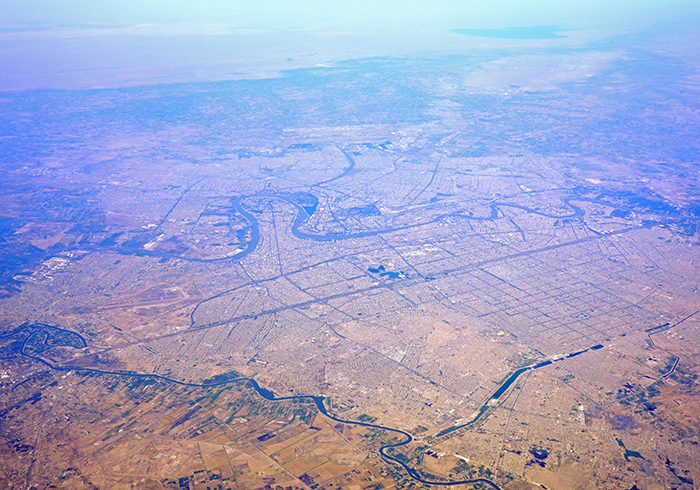The never-ending supply chain disruptions of recent years may have forced global companies to adapt, hiking up costs in the process, but some have found silver linings amid the clouds. Sean Ramsden, CEO of British foods exporter Ramsden International, talks to Maria Gonçalves about how the geopolitical turbulence of the past year has impacted the business, and the unexpected positives that have come with it.
In a post-Covid world, it once seemed as though no other supply chain shock could compare. Yet several conflicts and tariff disputes later, volatility has become the norm for businesses trading goods around the world.
Over the past year, the global trade sector has been put to the test.
With the Israel-Gaza war came the closure of the Red Sea-Suez Canal route, vital for Asia-to-Europe shipments. Before the conflict, 12% of global maritime trade and 30% of global container traffic worth over US$1tn traversed the Suez, according to the World Economic Forum, and its disruption has had a significant impact on global trade and financial markets.
Elsewhere, the war in Ukraine, heightened tensions in the Taiwan Strait and ongoing disputes in the South China Sea continue to threaten the stability of long-established trade routes.
Adding to an already rocky landscape, US President Donald Trump’s global tariffs showdown in April further shook up supply chains and reshaped the way countries traded with one another.
Ramsden International, a wholesale exporter of UK-manufactured grocery goods, has seen the ramifications of these shocks most prominently across its logistics operations.
“In terms of international trade, the most impact we’ve seen has been on sea freight,” says the company’s CEO, Sean Ramsden, citing the fallout from the closure of the Red Sea as a particular disruptor.
“It is the ability to move product internationally – and linked to that, the price of moving it – that has been most affected,” he tells GTR. “Especially in the Middle East and certainly Southeast Asia, which is always a significant market for us.”
A World Bank report from February this year showed that global shipping costs at the end of 2024 were about 141% higher than pre‑Red Sea crisis levels. On routes through the Suez Canal, increases were even steeper, up 230% from end‑2023.
Tariff ramifications
But the canon trade event of the year has arguably been the US’ unleashing of sweeping tariffs on most world economies. The fees ranged from 10% to 60%, with China at one point facing an eyewatering 145% rate, including legacy duties.
The move has led to a major shift in global supply chains. Large US corporates such as shoemaker Steve Madden and retail giant Target, for instance, have had to turn to suppliers and factories in Latin American and Southeast Asian countries to reduce reliance on China. Meanwhile, Chinese soybean buyers are now ditching US producers in favour of Brazilian and Argentinian rivals.
In the UK, tariff volatility has now become a “critical threat” to business profitability, according to recent research among senior retail leaders led by rebate and pricing management platform Enable.

Ramsden International, on the other hand, has escaped the direct wrath of Trump’s policy. The exporter has not seen “a huge drop in demand” from its US customers since the duties – including a 10% levy on most UK goods – were introduced, its CEO says.
He attributes this to the nature of the company’s product range, which includes Cadbury chocolate and Birds Eye fish fingers, describing them as “quite speciality and niche in the US”, where there is “a feeling that the value chain can bear that 10%”.
In fact, the company is seeing a “positive indirect impact” of the White House’s protectionist approach, Ramsden says, as “certain markets that have been very heavily impacted by it are showing a slight shift away from the US as a supplier, and towards the UK”.
“In regard to places like the Caribbean and Latin America, Trump’s tariff policy has probably helped us in some ways,” he adds.
Financial impact
All is not rosy, however. The turbulence across global supply chains has led to, and been compounded by, port congestion in key regions all over the world – bottlenecks that can take months to resolve.
Asian ports, for instance, faced severe backlogs when the Red Sea route became inaccessible and traders scrambled to find alternative paths. Similarly, in the immediate aftermath of the White House’s global tariffs announcement, there was a period of adjustment as businesses pondered next steps.
According to Portcast, there were over 80 blank sailings – when a carrier skips a scheduled port or cancels an entire voyage – in April 2025, the highest since May 2020.
This was “the result of suppliers and buyers making quick adjustments to what they sold and to whom”, Ramsden explains as he recalls having to deal with long delays entering a Malaysian port at the time.
“If somebody had said six years ago what life would be like running a business in 2025, I would have laughed at them.”
Other key ports across China, Singapore, Vietnam and South Korea all saw higher queue times in that period, as per several freight data sources.
“Global freight doesn’t have a lot of inbuilt access capacity to it, so that causes problems to both the ports and the shipping companies,” Ramsden adds.
“It’s added cost and lead time, and customers don’t like changes to lead times generally, because it screws their algorithms for purchasing,” he explains. Plus, any “relatively small changes to the freight costs can have relatively big changes to the landed cost of a product”.
All in all, Ramsden confirms he is seeing “quite a challenge to the inherent demand piece as a result of the supply chain volatility”.
On a recent visit to Southeast Asia, he saw the impact of this new dynamic in action. “All of the retailers have basically increased their shelf space of Australian food at the expense of [European] food”, he notes, as it’s “just a bit easier” to source from their Australian neighbours.
To mitigate the effects of the maritime trade disruption felt in the past year, the UK exporter has begun shipping some of its goods by air.
“Air freight is a lot more expensive, but it’s quicker and it does work for higher value products,” Ramsden explains. “So things like confectionery, you can slightly make a bit more of a case for air freight because it’s generally high value.”
More generally, Ramsden International has tried to absorb the impacts of global volatility by “putting more focus on our logistics purchasing and management function” and “trying to negotiate better with sea freight logistics suppliers”.

Trade finance view
Despite the ongoing trade upheaval, Ramsden International’s financial supply chains have remained largely unaffected.
The company is seeing “slightly longer delays in payment, partly reflecting the longer lead times”, says its CEO. “Of course, we’ve got customers in Asia that are very reluctant to pay us before they’ve received the product.”
But he notes “it’s nothing that’s been really damaging to us in terms of the working capital cycle”, adding that payment terms for international buyers have not changed.
Similarly, the supply chain finance facility the company has been using with HSBC has remained stable since Brexit, Ramsden says.
“We used to have an invoice finance facility, but then post-Brexit we set up our own subsidiary in the EU to buy from us, and most banks can’t offer invoice finance on a sale to a subsidiary,” he explains.
“So we shifted to a trade finance model – it works fine for us, we have quite a heavy seasonal focus, so we end up sending quite a lot out in that September-November period,” Ramsden says. “Having a facility that gives us that seasonal flexibility and shadows our sales pattern is quite useful.”
The B2B exporter also has a commercial credit insurance policy in place. It has not faced stricter conditions or increased financing costs due to risk reassessments by the bank or the insurer in light of recent geopolitical events.
“We’re happy to supply anybody, but we only do it on secure terms.”
However, it has meant that markets Ramsden would like to break into – like Lebanon – are still considered too risky by the insurers. “We would like to be able to trade there on open terms, but we can’t get commercial insurance there,” Ramsden notes. “We’re happy to supply anybody, but we only do it on secure terms.”
However, security is an improbable concept these days. Indeed, for many companies across the globe, it is insecurity that looks set to persist as they reel from what feels like an endless stream of so-called ‘black swan’ events.
The Chartered Institute of Procurement & Supply Q3 2025 leaders survey showed that fears over tariffs, geopolitical instability, and a surge in cyber threats continue to dominate the outlook for the sector.
For Ramsden, the events of recent years have given him “a filter for looking at a business that’s probably different than what we had five or six years ago”, adding that instability “makes you much more aware of risk and that informs all sorts of business decisions”.
“If somebody had said six years ago what life would be like running a business in 2025, I would have laughed at them,” he says. Now, like many of his peers across the supply chain, he has grown accustomed to simply “expect the unexpected”.








